
Broadcasting House and the BBC
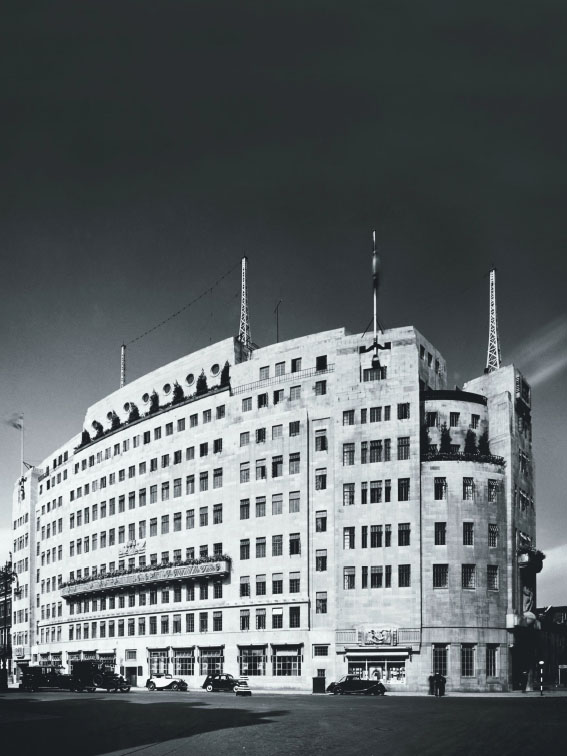
©BBC/CORBIS
Broadcasting House, the Art Deco building that is the iconic home of the British Broadcasting Corporation, has stood at the end of John Nash’s beautifully designed Regent Street on the corner of Portland Place and Langham Street in London for more than 75 years. Many in the United States first became aware of Broadcasting House when American journalist Edward R. Murrow reported the events unfolding in London during World War II for CBS radio from this London building. “This … is London,” Murrow intoned at the beginning of each broadcast, reporting news of the Blitz to anxious American listeners as he spoke from the rooftop of Broadcasting House while bombs rained from the night sky onto the streets of London.
Broadcasting House was built in 1932 as the first building ever erected as a broadcast center in the United Kingdom. Architectural Review called it “the new Tower of London” and a “bastion of modernism.” Architect George Val Myer based the building on an American skyscraper design, but had to modify his original plan to accommodate the protests of local residents who complained about the shadow the building would cast on houses in Langham Street. This revised plan accounts for the building’s asymmetrical shape.
Over the entry, two stone statues by Eric Gill, a well-known 20th-century sculptor, depict the characters of Ariel, a spirit of the air (and a metaphor for the medium of radio), and Prospero, the magician from William Shakespeare’s The Tempest. Sculptured friezes, also by Eric Gill, adorn the exterior side walls of the building and repeat the character of Ariel in various scenes.
Broadcasting House is currently undergoing a major redevelopment. Phase I, now complete, refurbished the original building that is home to Radios 3 and 4, and included construction of a new east wing that houses Arabic and Persian Services and BBC London television. Phase 2 is scheduled for completion in 2012 and will add an extension to the north of nearby Regent Street. This extension will link Broadcasting House to the new East wing and will be the base for national and international journalism such as BBC News and World Service.
[caption id="AtHomewithAuntieBeeb_img1" align="alignleft" width="304"]
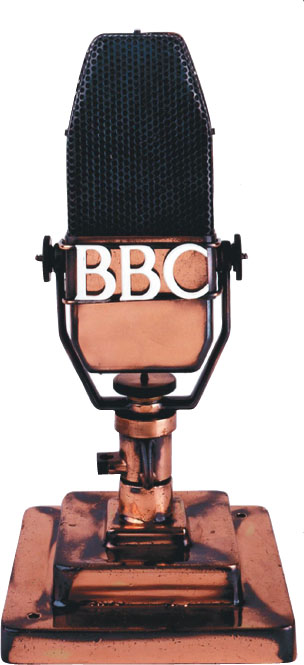
©BBC
When this entire project is completed, Broadcasting House will include approximately 80,000 square meters and boast state-of-the-art digital broadcast facilities as well as the largest live newsroom in the world.
The British Broadcasting Company, which later became the British Broadcasting Corporation, was officially formed by a group of wireless radio manufacturers for the commercial purpose of selling radios. John Reith, BBC’s first general manager, had a much broader vision than the founders, however, and wanted an independent broadcast system that could educate, inform and entertain the nation without any political interference or commercial pressure.
Within its first year, BBC broadcast plays, concerts, talks and variety shows from its home in Savoy Hill just off London’s Strand. BBC also aired the first weather forecast, the first gardening show, the first cooking show and the first children’s programs to audiences around the United Kingdom. While there are many cable television channels in the UK now, there were only four stations for many years and two of them were part of BBC—affectionately referred to as “Auntie Beeb” or simply “The Beeb.”
During the General Strike of 1926, when publication of regular daily newspapers ceased, the nation depended on BBC for its news. Until then, the powerful newspaper industry had stopped BBC from reporting any news until after 7 p.m., so that sales of newspapers would not be affected. Winston Churchill, then chancellor of the Exchequer, demanded the Government take over BBC, but John Reith argued such a scenario would be against the nation’s interests.
Visiting “Auntie Beeb”
Free tickets for live radio and television shows are available. Find ticket and tour information on BBC’s Web site at www.bbc.co.uk/showsandtours.
Audiences are invited to Broadcasting House for live broadcasts of various radio shows, while tickets for sitcoms and big orchestral music programs are currently available for broadcasts at the BBC Television Centre at London’s Shepherd’s Bush.
[caption id="AtHomewithAuntieBeeb_img2" align="aligncenter" width="280"]
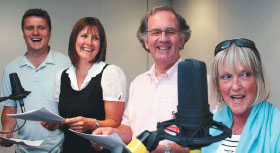
MICHAEL HOGG
[caption id="AtHomewithAuntieBeeb_img3" align="aligncenter" width="450"]
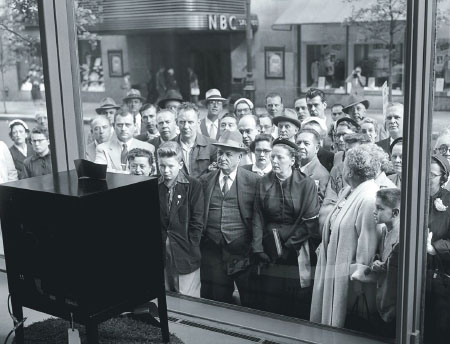
©BETTMANN/CORBIS; FAR
[caption id="AtHomewithAuntieBeeb_img4" align="aligncenter" width="777"]
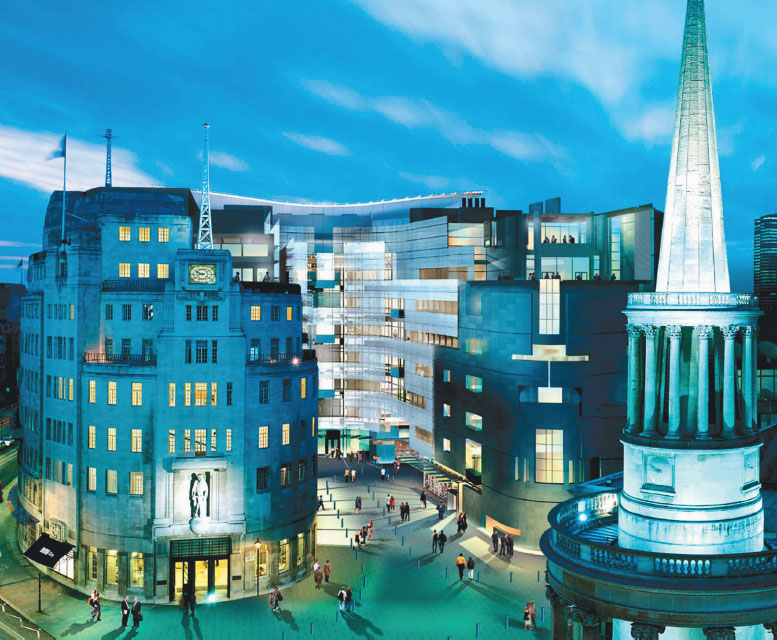
©BBC
‘VISITORS ARE LED ALONG HISTORIC CORRIDORS, INTO THE NEWLY RESTORED RADIO THEATRE’
[caption id="AtHomewithAuntieBeeb_img5" align="aligncenter" width="368"]
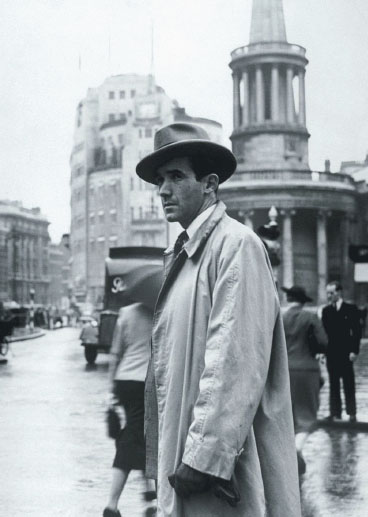
©BETTMANN/CORBIS
As the BBC expanded, it outgrew its headquarters at Savoy Hill and moved into its new home in Broadcasting House in 1932. On Christmas Day that year, King George V delivered a radio message written by Rudyard Kipling and started a tradition of annual holiday broadcasts by reigning monarchs, via radio and eventually television. Today many in Great Britain turn on their television sets at 3 p.m. on Christmas Day to hear the Queen’s broadcast.
During the course of World War II, the BBC’s reputation for honesty and accuracy was enhanced through its faithful news coverage of day-to-day events. Winston Churchill delivered several of his well-known speeches from the studios of Broadcasting House, and Charles DeGaulle regularly delivered messages of hope to the French Resistance from its third floor. Broadcasting House was badly bombed during the war, with the most serious attack occurring in October 1944, when the fifth floor of the building was hit and seven BBC staff members were killed. Bruce Belfrage, who was broadcasting the 9 p.m. news at the time, continued on without pause as the building debris fell around him.
Today, tourists can see the interior of Broadcasting House and glimpse the work of the BBC during guided tours offered on Sunday afternoons. The tour starts within the lovely Art Deco foyer. In collaboration with English Heritage, Broadcasting House’s original marble floor with the first BBC logo in its center has been restored to its initial appearance. Straight ahead is “The Sower,” yet another Eric Gill sculpture. This elegant marble statue stands as a metaphor for broadcasting, depicting the sower casting a seed so it will flourish and grow just as knowledge has been imparted through radio and later television broadcasts.
Hands off the BBC!
BBC has remained independent of advertisers, shareholders and government interference and receives much of its funding from mandatory television license fees imposed on every household with a television set in the United Kingdom. Television license fees, currently £139.50, are set annually by the secretary of state for culture, media and sport. A similar license for electric radios was abolished in 1971.
The BBC operates under a Royal Charter that defines its purposes and allows it to act autonomously to a great degree. Royal Charters date back to the 13th century and are granted by the sovereign on the recommendation of the Privy Council; these days few such charters are granted. A charter is reviewed for renewal as it nears its expiration date; the current 10-year Charter for the BBC dates from January 1, 2007.
During the course of the 90-minute tour, visitors are led along historic corridors and into the newly restored Radio Theatre where many orchestral concerts and well-known variety and comedy shows first took place. Originally called the Concert Hall, the Radio Theatre is adorned with artistic reliefs by Gilbert Bayes that depict scenes of mythology, English pastoral life and English poetry. A focal point of the Artists Lobby is the tapestry the French government gave BBC after World War II as thanks for making DeGaulle’s broadcasts to the Resistance possible. The tour also includes a close-up look at some of the radio studios used by BBC Radio 3—known for its continuous classical music—and Radio 4 programs, and offers the opportunity to produce your own radio show with music and sound effects. Prebooking is essential.
An eerie and touching display of light and poetry is beamed from the roof of Broadcasting House every evening at 10 p.m. This memorial to journalists killed while on assignment for BBC was created by the Catalan artist Jaume Plensa and unveiled on June 18, 2008. Entitled “Breathing,” the memorial is an illuminated cone-shaped column made of glass with a spiral of text by the poet James Fenton etched within it. A longer poem by Fenton, a former war correspondent, has been commissioned for the base of the East Wing.
Now well into the digital age, Broadcasting House provides a place where BBC informs and entertains millions. BBC and its home have been a part of the daily life of people all over the world, and fixtures in the city of London. Broadcasting House’s renovations will allow BBC to carry on well into the future.





Comments